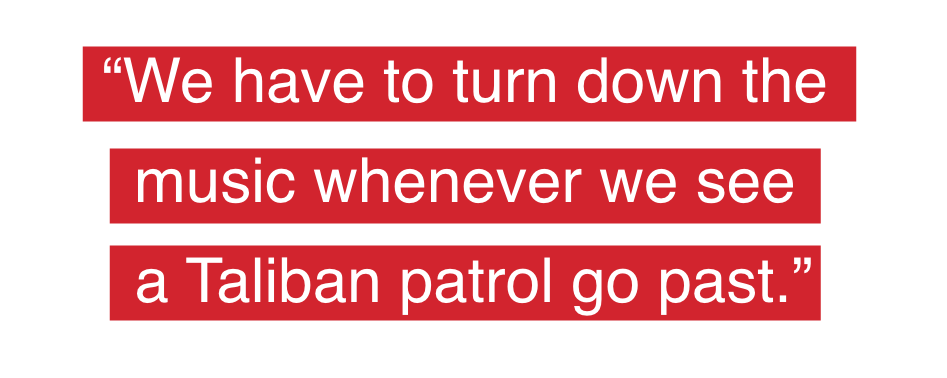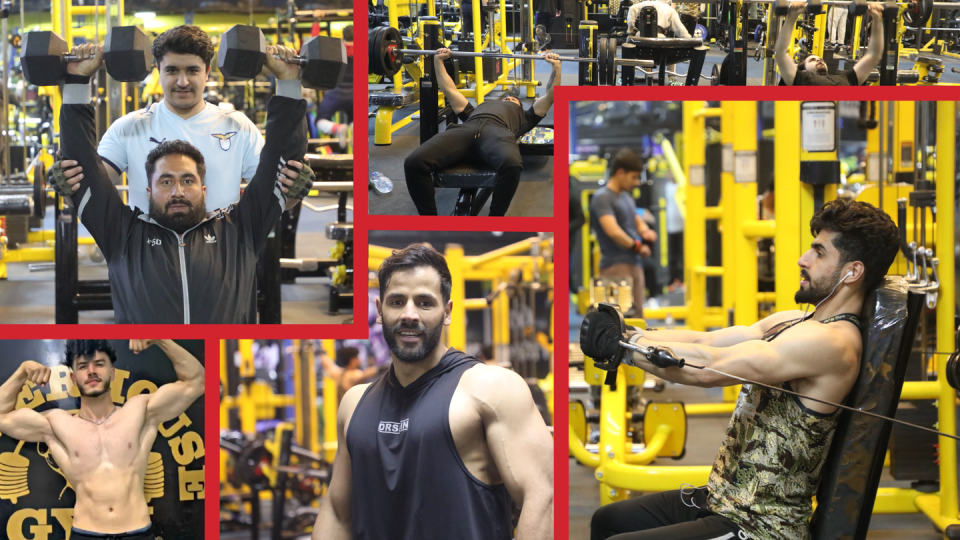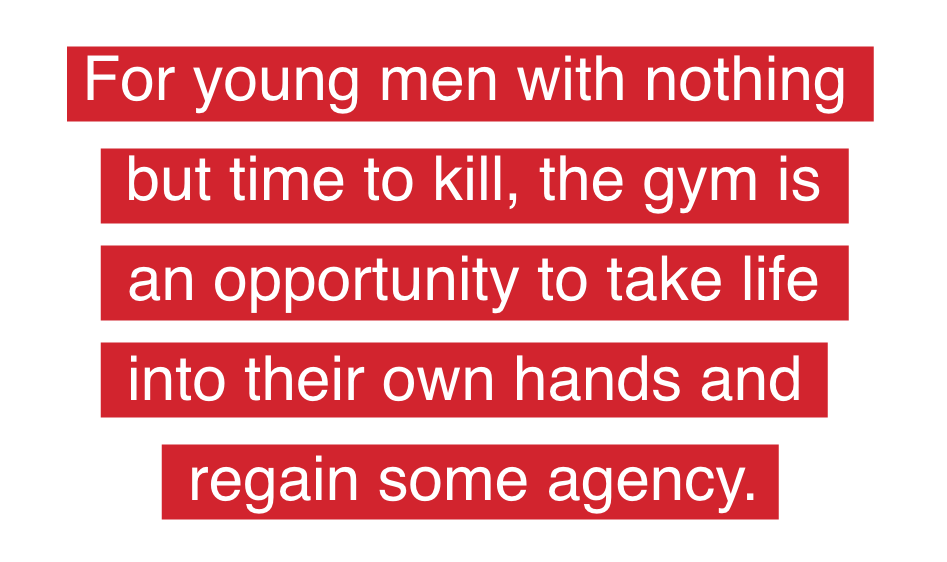Why the Gym Has Become so Important in Taliban Controlled Afghanistan


Entering a gym via dusty set of concrete stairs to hear Lady Gaga’s 'Poker Face' being blasted out full-volume isn’t usually something that would raise eyebrows. But this is Kabul, the capital of what its new Taliban rulers now refer to as the Islamic Emirate of Afghanistan. Here, an austere theocracy designates almost all music – let alone degenerate Western pop songs – as un-Islamic, so the closest thing you’ll usually hear to a tune is the call to prayer that wails out five times a day.
In these gyms, you wouldn’t expect to see posters of extremely muscular men in their underwear, but Arnold Schwarzenegger and Ronnie Coleman, as well as local legends such as 'Mr Muscle Afghanistan', Yasin Qaderi, still adorn these walls. The Taliban takes a very dim view of the pride that comes with showing off your body. When they have decided to investigate, they come in, wave their guns around and tell men to cover their limbs and grow their beards. But they are yet to close down gyms for breach of their vague rules on modesty.

“We have to turn down the music whenever we see a Taliban patrol go past,” says Majid Ahadi, a 28-year-old member of Friends Gym in the Shar-e-Naw district of Kabul. Twice during my workout, the volume suddenly dips to zero, to be replaced by the loud grunts and heaves of men pumping barbells and dumbbells. It is only men now – the mixing of the sexes in this new environment is unthinkable.
Bodybuilding, and sports in general, have a complicated history in Afghanistan. During the Taliban’s first repressive regime between 1996-2001, Kabul’s central stadium became infamous as the site of grotesque executions, rather than sporting contests. When the US, along with NATO and local Afghan Northern Alliance allies toppled the Taliban in 2001, bodybuilding’s popularity exploded. Alongside cricket, where the Afghan national team frequently punches well above its weight, it has become something of a national sport.

While levels of violent deaths have plummeted by nearly 80%, and many areas of the country are relatively safe for the first time in years, Afghanistan is stagnating, and an economic and spiritual malaise has overcome young men across the country. The economic situation for women and girls has deteriorated even more dramatically, as the Taliban have instituted harsh restrictions on their participation in public life. This includes draconian dress codes, bans from large numbers of jobs and the closing down of most girls’ secondary schools.
For Babur Amir, a 21-year-old from the northern city of Mazar-i-Sharif, and his friends, the gym has become the focal point of their lives. They can be found at Powerhouse Gym putting themselves through two-hour sessions, every day of the week, except for the traditional Muslim prayer day of Friday. They break their days into push, pull and legs, and like everywhere else in the world, Monday is ‘international chest day’. The reason for their passion is simple: at a time of great unpredictability, lifting weights delivers steady progress; you get out what you put in.

Amir is softly spoken, strikingly handsome – and perhaps a little vain. But most notably in a country with high levels of poverty and millions on the brink of malnutrition, he’s tall and extremely muscular. In the four days I spend at his apartment, our diet consists almost entirely of biscuits and bread, topped off with one feast of Afghan beef kebabs to say goodbye, as I leave Mazar-i-Sharif for Uzbekistan.
“I was training to be a teacher,” says Amir, “but now that the Taliban are in power, many schools are closed, and there is no work for teachers.” His is just one of many of the dashed dreams that the young men and women of Afghanistan have had since the fall of the Republic. Since August, Afghanistan’s economic crisis has accelerated, leaving millions out of work. “All the lights have gone out in Afghanistan,” he tells me.
Step off the dusty and drab streets and head downstairs to a gym – as all gyms in Afghanistan seem to be in basements or old bomb shelters – and you’ll be greeted with a whirlwind of colour and noise. Once inside, the energy of the men you are with also transforms. In normal life, they look forlorn, anxious, often walking with hunched backs and speaking softly, as if paranoid about being overheard. In the gym, they crack wide smiles and shout words of encouragement as they spot bench press sets or help their friends rack barbells. Many are keen to discuss fitness, but fewer are willing to speak on the record about the political situation, fearing blowback from the Taliban authorities, who have been known to beat and detain those who publicly criticise them.
To walk down those stairs throughout Afghanistan is to step into a different, more hopeful world in a country that is otherwise on its knees. The few bars and underground clubs that the old authorities of the Republic of Afghanistan, the Taliban’s predecessors, turned a blind eye to, which catered mostly to foreigners and rich Afghans, have long been shuttered. Similarly, cafes and shisha bars that were once a staple of the Afghan capital, are either closed or nearly empty, victims of the economic crisis that followed the Taliban takeover in August last year. Gyms, by contrast, are packed. It’s a strange but not unexpected phenomenon that places with very high youth unemployment have crammed gyms. Lebanon – itself in the midst of a dismal economic crisis – has experienced something similar. For young men with nothing but time to kill, the gym is an opportunity to take life into their own hands and regain some agency. As Amir explains it, “going to the gym is a way of taking control of our lives, when everything outside seems crazy and impossible to predict.”

For many men, the gym is also the only social life they have left. “You can find a gym around here every two or three hundred metres,” says Alireza Asghari, a personal trainer at the C4 gym in central Kabul. “Bodybuilding in Afghanistan is not very old, so it’s rare to find a gym with high standards, quality equipment and professional trainers. This gym is one of the few of them.” He tells me that despite the enthusiasm, the country’s economic situation has meant that the sport has developed in an ad hoc manner.
“Currently, most of those who work out in Afghanistan are amateurs,” Asghari says. “Those who want to work out to participate in Asian and Southeast Asian competitions are called amateurs and semi-amateurs. There are very few professionals who work out to participate in competitions, because of the situation in the country. The situation is not favourable for them. They can’t provide for themselves [adequately enough] to prepare for foreign competitions.”
“During the Republic, there was work, there was income and we could all work out with no stress. But the rule of the Taliban has seen many problems. The bodybuilding community is very stressed. Many have become unemployed and are thinking of how they will survive tomorrow.”
For Sayeed Burhany, a regular at C4, the gym is a place of peace, where people can put aside their differences and relax. “I think people like the gym because you don't fight or beat anyone else,” he says with a laugh.

Of course, this safe space is not open to half the population. Along with education, and employment opportunities, sport and fitness are major spheres of life the Taliban are closing to Afghan women and girls. Women’s sports have already been outlawed and more recently, women were banned from parks in the Afghan capital, Kabul. When you speak to men in the country, the treatment of their female friends and colleagues is a major cause of anger against the new regime. “We can’t believe what they’ve done to our sisters, who deserve the same rights and respect. You won't find this in the Qur’an. This is not how Muslims treat each other,” one told me.
This sentiment is expressed by those who hated the old Republic government and otherwise sympathised with the Taliban’s struggle against the US as a foreign occupier. However, several gyms have managed to strike deals with more liberal members of their local Taliban. Once or twice a week, they are allowed to set aside a few hours for women to train.
A year has passed since the Taliban’s takeover of Afghanistan. In that time the country has been fundamentally transformed, and Ahadi tells me that in the last few months there have been a few changes in his gym too. “I sometimes see four or five local Taliban who work out here too now. They told us that the pictures of men and women and their faces must be covered. Seeing them nearly naked is a big sin. We can’t wear shorts and must wear trousers below the knee.” But, he says, they are allowed to keep playing music, and these small victories seem very significant to them.

As I make my way out of the country, crossing the border to Uzbekistan, I have one final, strange encounter with the Taliban. “Very nice, you are a very strong man,” the Taliban border guard says to me, giving my bicep and shoulders a squeeze. A short, scraggly-bearded Afghan with a stomach pouch poking out of his purple Afghan robes (known as the shalwar kameez), he can’t be much older than his early twenties. There’s long been a saying in the bodybuilding community that men start working out to get the attention of women but continue for the admiration of men. I never expected the affections of Taliban soldiers to be among the advantages of working out.
You Might Also Like


